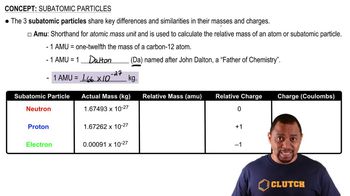Here are the essential concepts you must grasp in order to answer the question correctly.
Wave-Particle Duality
Wave-particle duality is a fundamental concept in quantum mechanics that describes how particles, such as electrons, exhibit both wave-like and particle-like properties. When not observed, electrons can create interference patterns typical of waves, but when a measurement is made to determine their path, they behave like particles, collapsing the wave function and eliminating the interference pattern.
Recommended video:
Quantum Measurement
Quantum measurement refers to the process of observing a quantum system, which fundamentally alters its state. In the context of the double-slit experiment, attempting to measure which slit an electron passes through causes the system to lose its wave-like behavior, resulting in the disappearance of the interference pattern. This highlights the observer effect in quantum mechanics.
Recommended video:
Units of Radiation Measurement
Single Electron Interference
Single electron interference occurs when electrons are sent through a double-slit apparatus one at a time. Even at low rates, individual electrons can still create an interference pattern over time, demonstrating their wave-like nature. This phenomenon illustrates that the interference pattern emerges from the collective behavior of many single electrons, reinforcing the concept of wave-particle duality.
Recommended video:
Single Displacement Reactions
 Verified step by step guidance
Verified step by step guidance

